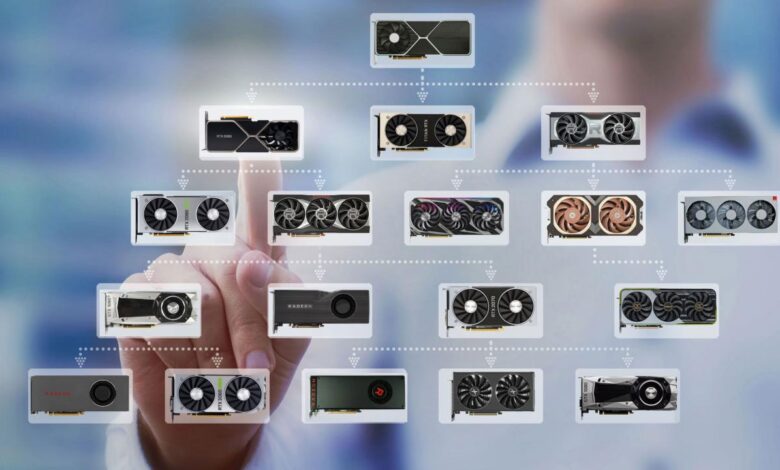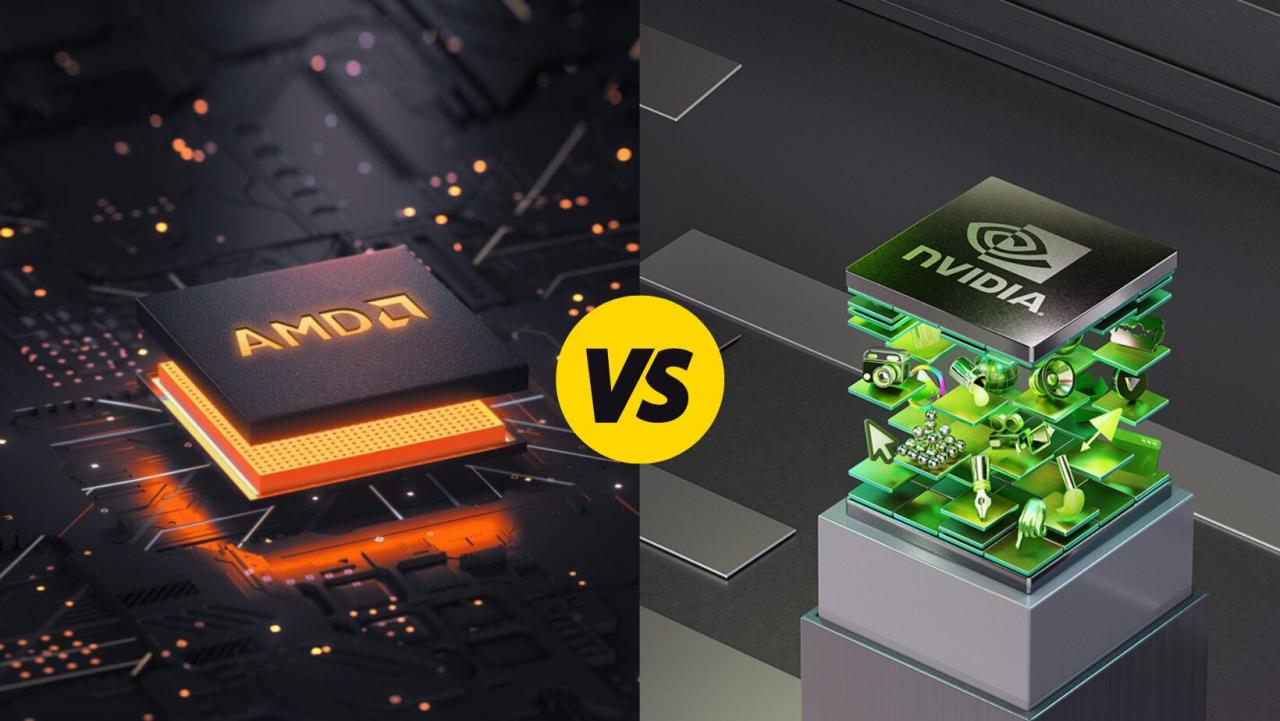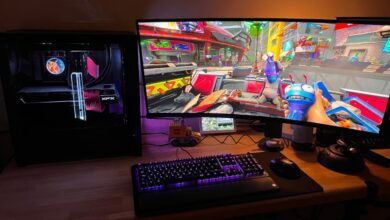Next-Gen GPU Performance: An In-Depth Analysis

The Graphics Processing Unit (GPU) has evolved from a specialized hardware component for rendering graphics to the indispensable engine of modern, parallel computing. Its massive, multi-core architecture is now the primary accelerator for everything from photorealistic gaming and video rendering to the complex matrix multiplications driving Artificial Intelligence (AI) and scientific simulations. To fully grasp the competitive landscape and the direction of technological progress, an Advanced GPU Chip Performance Analysis must delve far beyond simple metrics like clock speed, exploring the intricate architectural designs, memory systems, and specialized hardware that define generational leaps.
This comprehensive article provides a deep dive into the current state of advanced GPU performance, dissecting the core architectural elements from industry leaders, examining the transformative impact of technologies like ray tracing and AI, and outlining the essential metrics and future trends that will shape the next era of high-performance computing.
I. Understanding the GPU’s Core Architecture
The fundamental difference between a GPU and a Central Processing Unit (CPU) is a matter of design philosophy. While a CPU employs a few powerful cores optimized for sequential, single-threaded task execution, a GPU utilizes thousands of smaller, highly efficient cores designed for massive parallelism. This architecture enables the simultaneous execution of numerous identical calculations, which is perfect for processing the vast arrays of data inherent in graphics and AI workloads.
A. Streaming Multiprocessors (SM) and Compute Units (CU)
The basic building block of a modern GPU is a cluster of cores, organized differently by the dominant vendors:
- A. NVIDIA’s Streaming Multiprocessor (SM):The SM is the core processing unit in NVIDIA’s architecture (like Volta, Ampere, Ada Lovelace, and Blackwell). Each SM contains:
- CUDA Cores: The basic floating-point and integer processing units for general parallel computing.
- Tensor Cores: Dedicated, specialized units for accelerating matrix operations, which are the computational backbone of deep learning and AI inference.
- RT (Ray Tracing) Cores: Dedicated hardware units designed to rapidly perform Bounding Volume Hierarchy (BVH) traversal and ray-triangle intersection tests, accelerating real-time ray tracing.
- B. AMD’s Compute Unit (CU):The CU is AMD’s equivalent in their RDNA (Radeon DNA) and CDNA architectures. Each CU contains:
- Stream Processors: The equivalent of CUDA cores, handling general-purpose calculations.
- Ray Accelerators: Hardware units integrated within the CU structure to accelerate ray tracing, similar to NVIDIA’s RT cores.
- Matrix Cores (in CDNA/Instinct): Specialized cores dedicated to AI/ML matrix calculations, primarily in data center and HPC segments.
B. Execution Models: SIMT vs. Wavefronts
GPUs manage millions of threads through specialized execution models:
- A. Single Instruction, Multiple Threads (SIMT): This model is predominantly used by NVIDIA. Threads (typically grouped into “warps” of 32) execute the same instruction simultaneously on different data elements. This offers extreme efficiency for highly uniform workloads but can incur performance penalties when threads within a warp “diverge” (take different execution paths).
- B. Wavefronts (AMD): AMD employs a similar parallel execution model, but their grouping unit is typically a “wavefront” of 64 threads. The larger size can offer better efficiency for certain broad compute tasks but may suffer higher penalties for thread divergence compared to smaller warp sizes.
II. The Critical Role of Memory and Bandwidth
In advanced GPU chips, the speed at which data can be accessed and transferred is often the primary performance bottleneck, overshadowing core count or clock speed.
A. High-Bandwidth Memory (HBM) Technology
Modern high-end and data center GPUs (e.g., NVIDIA H100, AMD Instinct) utilize HBM, which stacks DRAM dies vertically on an interposer next to the GPU die. This stacking vastly increases memory bus width, leading to significantly higher bandwidth (data transfer speed) compared to traditional GDDR memory.
- A. GDDR6X vs. HBM3: Consumer GPUs typically use GDDR6X, offering excellent bandwidth for gaming. However, for extreme AI training and HPC applications that require terabytes of data to be processed per second, HBM (like HBM3) is essential due to its unparalleled throughput.
B. Smart Caching and Shared Memory
Effective memory hierarchy is vital to mask latency and keep the powerful cores fed with data:
- A. Infinity Cache (AMD): AMD introduced a large, on-die L3 cache (up to 128MB in some models) known as Infinity Cache. This cache is designed to drastically reduce the latency of accessing external VRAM, acting as a high-speed buffer and significantly boosting effective memory bandwidth in gaming and general workloads.
- B. On-Chip Shared Memory: Both architectures feature fast, on-chip memory (L1 Cache / Shared Memory) within the SMs/CUs. This memory allows threads within a block/wavefront to communicate and share data at incredibly high speeds, which is a key factor in optimizing parallel kernel performance.
III. The Performance Revolution: Ray Tracing and AI Acceleration
Two specialized technologies have fundamentally redefined GPU performance metrics and capabilities: real-time ray tracing and on-chip AI acceleration.
A. Ray Tracing: The New Standard for Graphics Fidelity
Ray tracing simulates the physical behavior of light, providing unprecedented realism in shadows, reflections, and global illumination.
- A. Hardware-Accelerated Bounding Volume Hierarchy (BVH): Ray Tracing Cores/Accelerators are dedicated units designed to accelerate the BVH traversal process—the geometric heavy-lifting required to figure out where a ray of light hits a virtual object.
- B. Performance Impact: While ray tracing delivers cinematic-quality visuals, it is extremely compute-intensive. Without dedicated hardware, frame rates would plummet to unplayable levels. The efficiency and number of dedicated RT/Ray Accelerator units are now critical benchmarks for high-end gaming and professional visualization GPUs.
B. AI-Accelerated Rendering (Tensor Cores and ML)
The performance hit from ray tracing is largely mitigated by the use of AI, specifically through neural rendering technologies:
- A. Deep Learning Super Sampling (DLSS – NVIDIA) / FidelityFX Super Resolution (FSR – AMD): These technologies use AI models to upscale a lower-resolution rendered image to a higher-resolution output, often generating sharper images than native resolution while significantly boosting frame rates. DLSS, in particular, leverages the dedicated Tensor Cores for this acceleration.
- B. AI Denoising and Frame Generation: Specialized AI algorithms are used to rapidly “denoise” the typically grainy output of ray-traced images and to generate entirely new intermediary frames (Frame Generation). These AI-driven processes leverage the massive parallel compute power of the Tensor Cores, demonstrating the synergy between graphics and AI hardware. The performance increase provided by frame generation technologies often gives the GPU a significant performance lead over its rivals in specific gaming scenarios.
IV. Essential Metrics for Advanced Performance Analysis
To conduct a comprehensive performance analysis, one must look beyond simple specifications and understand the real-world metrics derived from complex benchmarks.
| Metric | Definition | Significance |
| TFLOPS (Tera Floating-Point Operations Per Second) | The total number of trillion floating-point operations the GPU can execute per second (e.g., FP32, FP64, or specialized Tensor/Matrix formats). | Measures the raw computational throughput, critical for HPC and AI training. |
| Memory Bandwidth (GB/s) | The speed at which data can be read from and written to the GPU’s memory (VRAM). | The most common bottleneck. High bandwidth is crucial for high-resolution graphics and large AI models. |
| RT Cores/Ray Accelerators Count | The number of dedicated hardware units for accelerating ray tracing calculations. | Direct indicator of real-time ray tracing performance and visual fidelity capabilities. |
| Performance Per Watt (Efficiency) | The amount of compute or frames delivered for every watt of power consumed. | Crucial for laptops, data centers (reducing cooling costs), and overall long-term ownership cost. |
| Frame Rate (FPS) in Real-World Games | The number of frames rendered per second in actual gaming benchmarks (1% Lows and Average FPS). | The ultimate real-world measure for gaming performance. |
| AI/ML Throughput (TFLOPS/TOPS) | Specialized performance metrics for Tensor or Matrix operations (e.g., INT8, FP16 precision). | The primary metric for evaluating a GPU’s value in AI inference and training workloads. |

V. The Vendor Ecosystem: NVIDIA vs. AMD Strategies
The competitive dynamic between NVIDIA and AMD is a major driver of innovation, with each company pursuing distinct strategies.
A. NVIDIA: Ecosystem and AI Dominance
NVIDIA’s strength lies in its mature and comprehensive software ecosystem, centered around CUDA (Compute Unified Device Architecture).
- A. CUDA’s Advantage: CUDA is a parallel computing platform and programming model that has been the industry standard for AI and scientific computing for over a decade. This deep integration means that virtually all AI frameworks (like PyTorch and TensorFlow) and HPC applications are optimized first for NVIDIA GPUs, creating a significant barrier to entry for competitors.
- B. Professional Segmentation: NVIDIA successfully segments its products, with GeForce RTX for gaming and NVIDIA RTX/Quadro/HPC lines for professional and data center workloads, each offering unique features and certifications.
B. AMD: Price-to-Performance and Open Standards
AMD’s competitive edge often resides in its strong price-to-performance ratio in the consumer gaming market and its advocacy for open standards.
- A. Open Source Focus: AMD champions open-source programming interfaces like ROCm (Radeon Open Compute Platform) as an alternative to CUDA and utilizes open-standard upscaling technologies like FSR, making its features more widely accessible across different hardware platforms (including competitor cards).
- B. Synergy (Smart Access Memory): AMD leverages its dual position in the CPU and GPU markets with technologies like Smart Access Memory (SAM), which allows Ryzen CPUs to access the entire GPU memory, often yielding minor performance boosts when paired with a Radeon GPU.
VI. Future Trends and Predictions in GPU Technology
The path forward for advanced GPU performance will be defined by three key trends:

A. The Rise of Heterogeneous Computing
Future systems will rely less on a single powerful processor and more on a seamless mix of specialized chips working together:
- A. Advanced Chiplet Design: Both companies are moving towards or already utilizing chiplet architectures, separating the GPU’s core compute logic (GPU Die) from the memory controllers and I/O (Interface Die). This modular approach uses smaller, easier-to-manufacture dies, improving yield, reducing cost, and enabling massive scaling.
- B. Unified Memory Architectures: Innovations that blur the lines between CPU and GPU memory (like integrated GPUs/APUs) will reduce latency and improve data sharing efficiency between the two processors, crucial for future data-intensive tasks.
B. The Perpetual Demand for AI Acceleration
AI is no longer just a feature; it is an intrinsic part of the GPU’s function.
- A. Advanced Tensor Core Evolution: Future Tensor/Matrix cores will be optimized for even more diverse AI precision types (e.g., FP8, even more advanced sparsity/quantization techniques) to maximize performance-per-watt for massive Large Language Models (LLMs) and other generative AI applications.
- B. Neural Rendering as the Default: AI-accelerated upscaling and frame generation will become the default way games and professional applications are rendered, making raw GPU power and AI core efficiency inseparable performance metrics.
C. Energy Efficiency and Packaging
Power consumption and thermal management are becoming the most critical constraints for both consumer and data center GPUs.
- A. Performance-Per-Watt Focus: Driven by the enormous power draw of high-end chips (up to 600W+ in some data center designs), efficiency will be the leading engineering priority. This leads to innovations in manufacturing process nodes (e.g., 3nm, 2nm) and dynamic power management.
- B. Next-Generation Interconnects: Technologies like NVIDIA’s NVLink and similar high-speed inter-GPU interconnects will evolve to allow multiple GPUs to communicate at speeds far exceeding standard PCIe interfaces. This will enable the creation of massive, cohesive GPU clusters essential for exascale supercomputing and hyperscale AI training.
Conclusion: The Computational Imperative
Advanced GPU chips are the vanguard of modern computing, relentlessly pushing the boundaries of realism, simulation, and intelligence. The analysis of their performance must be holistic, accounting for raw TFLOPS, memory architecture, and the crucial accelerators for ray tracing and AI. The market dominance of these chips is not merely a consequence of technological superiority, but of a complete and continually evolving ecosystem—where hardware design and software optimization converge. As the demands of AI continue to grow exponentially, the GPU’s role as the computational imperative is set to strengthen, making the mastery of these performance dynamics essential for professionals and enthusiasts alike.










